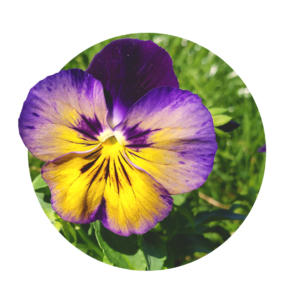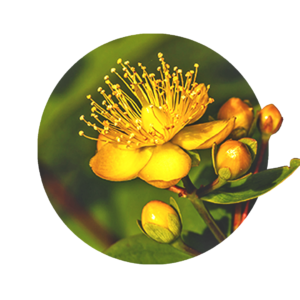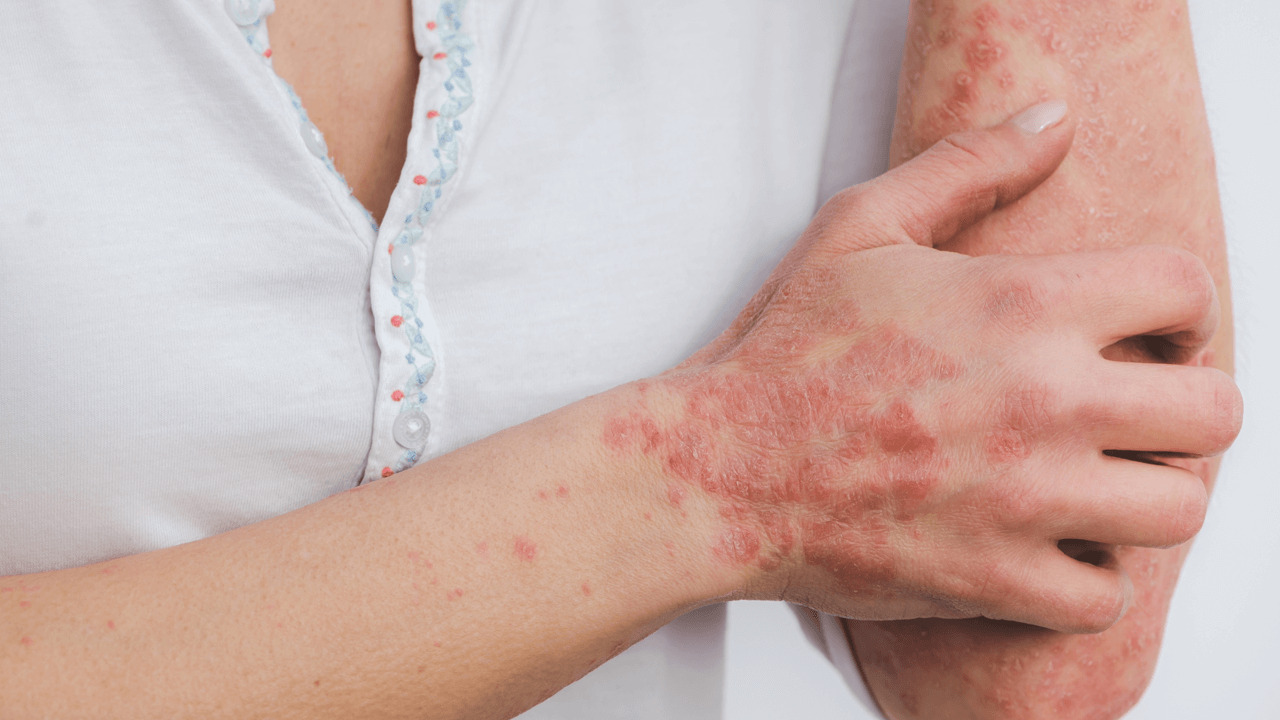We've probably all been there: you're on vacation and have a nice day at the beach. Then in the evening you suddenly discover a red shimmer on your skin. But what is it if this rash spreads over your skin in many small dots? Then it's probably a sun allergy. What is it? You can be allergic to the sun? Yes, you can, but it's only half as bad if you know everything there is to know about this allergy. So we hope you enjoy reading and that we can help you!
With natural methods, such as the individual spagyric mixtures from Zimply Natural, your complaints can be relieved naturally and sustainably.
Table of contents
- What is a sun allergy?
- These are the causes of sun allergy
- Blistering and itching - the symptoms of sun allergies
- Natural home remedies that can alleviate your sun allergy symptoms
- Various sun creams and other tips for enjoying the sun safely
- How sun allergy differs from other skin conditions
- UV radiation and skin cancer - what you should know
- These medicinal plants can help you with your sun allergy
- Zimply Natural - Your natural help for sun allergies
- FAQ: Questions and answers about sun allergy
What is a sun allergy?
A sun allergy, also known as light dermatosis, is a reaction of your skin to ultraviolet radiation from the sun. If you are one of those people who are sensitive to sunlight, you may experience symptoms after just a short time outdoors. These can include redness, itching or even blistering. The intensity of the symptoms can vary from mild to very severe. What's more, it is not only unpleasant, but can also damage your skin in the long term. In this blog, you will find out how you can protect yourself and which natural home remedies can help you with your symptoms. So you can enjoy the summer despite sun allergies!
That sun allergy includes several different diseases such as polymorphic light dermatosis, chronic actinic dermatitis and photoallergic reactions? Each form has its own individual triggers and symptoms.
These are the causes of sun allergy
Sun allergy is usually caused by the sun, but there is some information about it that you may not know. Genetics actually play a significant role in the development of sun allergies. For example, you may have a natural predisposition to sun allergies and they may be more common in your family. Skin type is also a decisive factor, as people with lighter skin tend to burn quickly instead of tanning. Their skin produces less protective melanin, which leads to a higher sensitivity to UV rays. Certain medications such as antibiotics or diuretics, perfumes, cosmetics or even sunscreens can make the skin more sensitive. The use of sunbeds can also trigger sun allergies and make the skin more susceptible. One factor that can also play a role in the development of sun allergies is the fluctuation of hormones. This occurs, for example, during pregnancy, the menopause or when taking hormone supplements.
Blistering and itching - the symptoms of sun allergies
If you have ever suffered from sun allergies, you know how painful they can be. One fine vacation day you wake up and your skin is covered with red spots, itching or even small blisters. Your first thought is probably sunburn, but it's rather strange for this to appear in small spots... Most likely, the spots are really a sign of sun allergy, where your skin is sensitive to UV rays. The reaction to the sun can vary in intensity and manifest itself as itching, redness, swelling or blistering. The affected areas are usually those that have been directly exposed to the sun - face, arms, décolleté or the backs of the hands. If you actually notice these symptoms, you should first avoid the sun and soothe your skin. This is of course annoying on a summer vacation, but if you don't take your skin into consideration, it will only react even more strongly.
That special clothing with UV protection can help people with sun allergies? They can stay outdoors safely and protect their skin from harmful UV rays.
Natural home remedies that can alleviate your sun allergy symptoms
Home remedies that are applied externally

Natural home remedies can help to alleviate symptoms such as itching, redness and blisters if you have a sun allergy. The first tip is aloe vera, whose cooling gel can be applied directly from the leaves of a plant. Aloe vera can also be found in some after sun care products. Green tea, which has anti-inflammatory properties, can also help with skin irritation. Either apply it to your skin as a cooled tea bag or make compresses from towels. If you prefer chamomile tea, you can use its soothing properties in the same way. Coconut oil is known for its moisturizing and anti-inflammatory effects. It can reduce dryness and flaking if you apply it directly to the skin. An oatmeal bath, made from finely ground oatmeal, can relieve itching. If you happen to only have cucumbers at home, you can also make cucumber compresses, which have a very cooling effect. Calendula cream can support skin healing and reduce itching.
Natural remedies for internal support
In addition to external remedies, there are of course also some tips for supporting the body internally in the event of a sun allergy. These include omega-3 fatty acids, which have an anti-inflammatory effect and can support skin health. Apart from supplements, you can also get them by eating fatty fish such as salmon or mackerel. In addition, vitamins C and E can strengthen the immune system and stimulate skin regeneration after sun damage. Symptoms can also be alleviated by quercetin, a flavonoid found in many fruits and vegetables. It supports with its strong anti-allergic properties.
Various sun creams and other tips for enjoying the sun safely
These are the differences between sun creams
Sun creams are mainly divided into chemical and mineral types. Chemical sun creams contain organic compounds such as oxybenzone, avobenzone and octinoxate. They absorb UV rays and convert them into heat, which protects the skin. Mineral sun creams are particularly suitable for sensitive skin and physically block and reflect UV rays. Inorganic particles such as zinc oxide or titanium dioxide are used for this purpose. Broad-spectrum sun creams protect against both UVA and UVB rays. UVB is responsible for sunburn and UVA for long-term skin damage. Waterproof sun creams also offer protection in water or when sweating heavily. However, waterproof does not mean non-washable. It simply means that the sun protection is maintained for a certain time (e.g. 40 or 80 minutes) even in water. The protection factor (SPF) of the sun cream indicates how effectively it protects against UVB rays, with a higher SPF meaning better protection. Depending on your personal preferences, sunscreen is available as lotions, sprays, gels, sticks or powders.

Further tips to avoid sun irritation
As well as using sunscreen regularly, there are a few other things you can do to protect your skin. Some of these are probably obvious, but we want to remind you of them anyway. To minimize exposure to the sun, wear protective clothing such as long-sleeved shirts, pants and a hat. Of course, you should also protect your eyes with sunglasses with UV protection. If you already have a sun allergy or want to protect yourself from it, try to avoid the midday sun between 10 am and 4 pm. This is when UV radiation is at its strongest. Foods rich in antioxidants such as nuts, berries, dark green leafy vegetables and oily fish can make the skin more resistant to UV damage.

The application of your Sun allergy sprays is, by the way, very simple: The spray is simply sprayed into the mouth according to the dosage instructions given on the vial. In order to achieve the best possible effect and to be able to optimally counteract the causes, we recommend use over a longer period of six to eight weeks. As a kind of cure, you spray 3×3 sprays daily.
How sun allergy differs from other skin conditions
Perhaps you have already had a skin reaction after a sunny day. This naturally raises the question of what it is. Sun allergies, also known as polymorphic light dermatosis, are mainly characterized by itching, redness and blistering. These symptoms typically occur in the areas exposed to light and are not very long after exposure to the sun. In contrast, eczema or psoriasis is not really light-dependent and is more permanent. They are characterized by dry, scaly patches of skin. Eczema can be aggravated by many triggers, including environmental factors, stress or allergic reactions. Psoriasis often has genetic causes and is characterized by cycles of remissions and outbreaks. Acne is not triggered by the sun, unlike sun allergy, but by clogged pores. Symptoms include pimples, black spots and painful cysts. So if you suddenly notice skin irritation in summer, you should consider the timing and nature of the symptoms.
That some people with sun allergies also react to indirect sunlight? This can be sunlight that falls through a window pane, for example, or artificial light sources that emit UV rays.
UV radiation and skin cancer - what you should know
UV radiation from the sun is one of the main causes of skin cancer. This is a serious disease that can occur in several forms. The three most common types of skin cancer are basal cell carcinoma, squamous cell carcinoma and the dangerous malignant melanoma. The first two types are usually confined to the upper layers of the skin and are less aggressive. However, malignant melanoma can quickly reach deeper layers of the skin and form metastases there. The development of skin cancer often begins in areas that are frequently exposed to the sun, such as the face, hands, neck and arms. UVB rays are known to cause direct DNA damage, which can lead to sunburn and promote the development of skin cancer. UVA rays, on the other hand, penetrate deeper into the skin and contribute to premature skin ageing. In addition, they can promote the suppression of the immune system, which also increases the risk of skin cancer. To prevent skin cancer after sun exposure, you should regularly check your skin for new or changed moles.
Changes that you should be aware of are
Asymmetry, irregular edges, different colors or a diameter of more than 6 mm.
These medicinal plants can help you with your sun allergy
In the case of sunstroke, the sun's radiation leads to overheating and overstimulation of the meninges and central nervous system. These areas become inflamed easily and increase their activity. Belladonna is the remedy for hot overstimulation, dampens down the CNS and counteracts inflammatory irritation. The headache disappears and the nausea subsides.
The Field violetsalso known as pansy, is often used to treat sun allergies and other skin inflammations. Viola can relieve the symptoms of sun allergy, such as red and itchy patches, as a tea or by topical application. Pansy is often used in ointments and creams to soothe irritated skin. The salicylic acid and antimicrobial flavonoids found in field violets can have an anti-inflammatory effect and support skin regeneration.
Propolis is a natural bee resin with proven antifungal and antibacterial properties that can be effective against skin problems. It is also effective in treating inflammatory skin reactions such as sun allergies by soothing inflammation and preventing infection. Propolis therefore offers comprehensive support for various skin problems.
Due to its calming and nurturing effect on nerves is St. John's wort always worth a try for skin problems such as rashes or acne. However, one should definitely think about it in the case of neurodermatitis. As the name suggests, the nerve metabolism and stress play a major role in neurodermatitis. Exactly the field of application of St. John's wort! St. John's wort promotes the formation of anti-inflammatory vitamin D in the skin and has a positive effect on your body's stress system.
Periwinkle promotes blood circulation and oxygenation. It dilates the blood vessels, which can lead to an increase in blood volume and a better oxygen supply to the cells. These properties can be particularly useful in the treatment of sun allergies. Improved blood circulation and oxygen supply can help to alleviate inflammatory processes in the skin. In addition, the regeneration of skin cells affected by the allergy can be supported.
Allergic skin diseases are usually accompanied by severe itching. The area is scratched, breaking through the skin barrier and opening the door to secondary infections. Because Cardiospermum is anti-inflammatory and therefore relieves itching, you no longer scratch at the wound and it can close and heal. The skin barrier is restored and the risk of secondary infection is averted
Zimply Natural - Your natural help for sun allergies
With Zimply Natural, we are the antidote to painkillers, sleeping pills, and standard medications. We are your medicine! For our mixtures we use the centuries-old natural healing method of spagyric back. The Spagyric combines the herbal active ingredients and phytotherapeutic elements of the HealingplantsThe mineral salt qualities, as well as the subtle information of the medicinal plants and the energetic potential of the Bach flowers.
With natural methods, such as the individual spagyric mixtures from Zimply Natural, your complaints can be relieved naturally and sustainably.
FAQ: Questions and answers about sun allergy
What is Mallorca acne and how does it differ from sun allergy?
Mallorca acne - what is it? This form of skin irritation is also known as acne aestivalis and typically occurs in sunny regions. The peculiarity of this skin reaction is that it appears despite the use of sunscreen. This particular form of acne develops when ingredients in sunscreen clog the pores and expose them to UV radiation. This leads to small red nodules and blisters, especially on the shoulders, décolleté and back. The symptoms of sun allergy are similar and can be accompanied by systemic reactions such as chills, fever or malaise. Avoiding further exposure to the sun is the motto in both cases. In the case of Mallorca acne, it is recommended to switch to oil-free or gel-based sunscreens. Sun allergy is compensated for with the use of broad-spectrum physical sunscreens without chemical ingredients.

Can an allergy to the sun develop over the course of a lifetime?
Yes, sun allergy can develop over the course of a lifetime. In fact, it rarely occurs from birth, but can develop at any time. If a new sun allergy occurs, this may be due to new medication or changes in the immune system or hormone levels, for example.
What role does vitamin D play in sun allergy?
Vitamin D plays a complex role in connection with sun allergy, which has not yet been fully researched. On the one hand, sun exposure is the main source of vitamin D. On the other hand, avoiding the sun can lead to a vitamin D deficiency in people with sun allergy. Symptoms of a deficiency would include weakness and muscle and bone pain. It can therefore be a major challenge for those affected to find the right balance between vitamin D synthesis and protection against skin reactions. Consequently, taking supplements and eating foods containing vitamin D is usually recommended. These include fatty fish such as herring, salmon and mackerel, egg yolk, fish oil and fortified foods such as margarine.
How can you tell the difference between sun allergy and sunburn?
Causes:
Sunburn is caused by too long and too intense exposure to UV rays. This exposure to the sun leads to direct damage to the skin cells. In the case of sun allergy, the exposure to the sun does not even have to have been long or intense for it to occur. In this case, the skin reacts unusually sensitively to UV rays, often triggered by an immunological reaction of the skin.
Symptoms:
Sunburn in its mild form is characterized by reddening of the skin, which is painful. In severe cases, blisters may also form and the skin may peel. Sun allergy is usually characterized by a rash pattern of small, itchy or burning pustules or blisters. These typically appear in areas that have been exposed to the sun. Sun allergy usually occurs just a few hours after exposure to the sun and is accompanied by itching or burning.
Treatment:
Sunburn is usually treated with cooling lotions or gels, plenty of fluids and, if necessary, painkillers. Sun allergy can be treated with natural home remedies or, in more severe cases, with creams containing cortisone. In both cases, you should also avoid the sun until further notice. If this is not possible, you should at least cover the affected areas of skin and use adequate sun protection.













